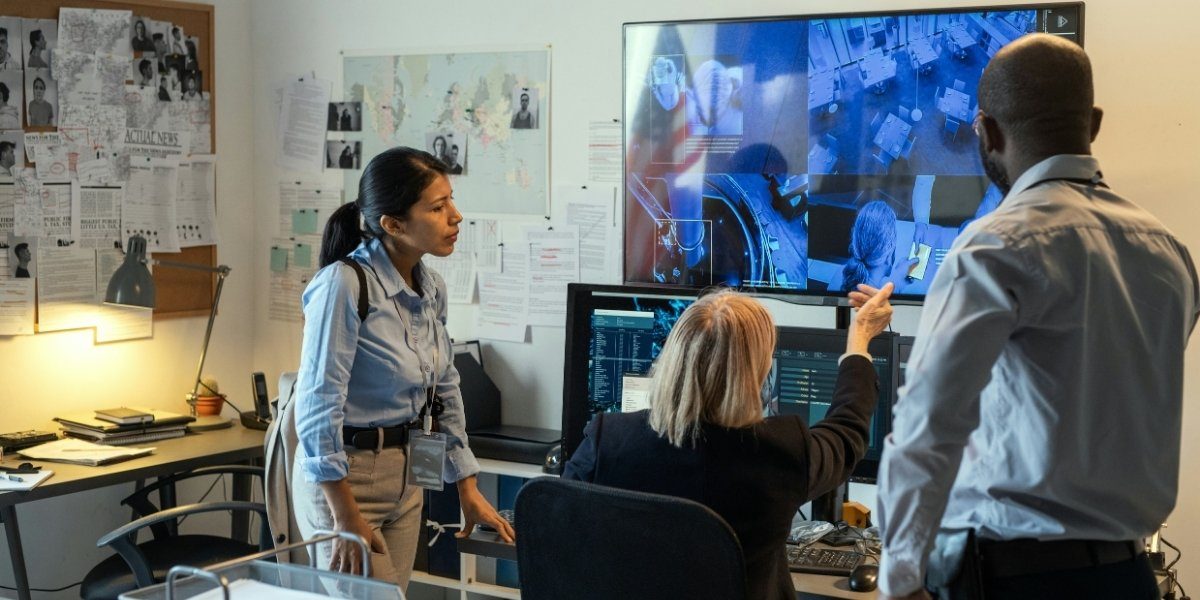The Panoptic Society: Examining the Rise and Implications of Ubiquitous CCTV Surveillance
As Closed-Circuit Television (CCTV) cameras become an increasingly common sight in both public and private spaces, we are entering an era of near-constant visual surveillance. This phenomenon, often referred to as “CCTV Everywhere,” has sparked debates on security, privacy, and the balance between the two. While CCTV surveillance is promoted as a way to ensure public safety and prevent crime, it also raises concerns about the erosion of personal privacy and civil liberties. This article explores the rise of ubiquitous CCTV, its technological advancements, benefits, drawbacks, and the broader societal implications.
Read Also: What You Need to Know About Starting a Business
The Proliferation of Surveillance Technology
The widespread adoption of CCTV has been driven by a variety of factors, including advances in camera technology, decreasing costs, and growing concerns about security in both public and private spaces.
Technological Advancements
Over the years, CCTV technology has evolved significantly. Today’s cameras offer high-resolution imagery, night vision capabilities, and integration with artificial intelligence (AI). These advancements have made surveillance more effective and cost-efficient, allowing for clearer images, better coverage, and real-time analysis.
Lower Costs and Increased Accessibility
The cost of installing CCTV systems has decreased, making them more accessible to a broader range of organizations and individuals. Businesses, government entities, and even private homeowners can now afford to set up surveillance cameras in various locations, contributing to the rapid proliferation of CCTV across societies.
Rising Need for Security
The perception that surveillance cameras contribute to increased security, deter crime, and assist in managing traffic has further spurred their adoption. From monitoring traffic flow to ensuring public safety, CCTV systems are increasingly seen as a necessary tool in creating safer environments.
Technological Capabilities and Evolution
CCTV systems have come a long way from their humble beginnings. Early surveillance cameras were limited to simple recording tasks, but today’s systems have evolved into highly sophisticated tools with advanced capabilities.
Facial Recognition and AI Integration
Modern CCTV systems often incorporate facial recognition technology, which can identify individuals based on unique facial features. AI-powered cameras can analyze footage in real time, detecting suspicious behavior or even predicting potential criminal activity. These systems can also automatically flag individuals in a crowd or track movement patterns across multiple cameras.
License Plate Recognition and Object Tracking
In addition to facial recognition, CCTV systems can now utilize license plate recognition (LPR) technology, which can track vehicles in real-time. Some advanced systems can also track objects, such as bags or packages, which adds an additional layer of surveillance, particularly in high-security environments like airports or shopping centers.
Perceived Benefits and Applications
CCTV is often touted for its numerous benefits, primarily in crime prevention and public safety. Here are some of the common arguments for the widespread use of CCTV surveillance.
Deterrence of Criminal Activity
One of the primary reasons CCTV is so widely adopted is the belief that it acts as a deterrent to criminal behavior. Knowing they are being watched can discourage individuals from engaging in illegal activities, particularly in high-risk areas such as parking lots, public transport hubs, or city streets.
Assisting in Crime Investigation
CCTV footage has proven to be an invaluable tool in investigating crimes. Law enforcement agencies use recorded footage to identify suspects, track movements, and gather crucial evidence for legal proceedings. CCTV can often provide irrefutable evidence that can aid in both criminal investigations and trials.
Managing Traffic and Public Safety
In addition to crime prevention, CCTV systems play a significant role in monitoring and managing traffic flow. Cameras are used to monitor roads, track traffic patterns, and ensure public safety by identifying accidents or traffic violations. They are also employed in public spaces to enhance overall safety and provide quicker responses in case of emergencies.
Privacy Concerns and Civil Liberties
While the benefits of CCTV are evident in enhancing security and safety, the increasing prevalence of surveillance raises significant ethical and legal questions, particularly regarding privacy.
Erosion of Privacy
One of the most pressing concerns about widespread CCTV surveillance is the potential erosion of privacy. With cameras in nearly every corner of public spaces, there is growing fear that individuals’ movements and behaviors are being constantly monitored without their consent. This can have a chilling effect on personal freedoms, including the right to express oneself freely in public spaces.
Misuse of Data
The data collected by CCTV cameras, especially when integrated with AI and facial recognition systems, raises concerns about how this information is stored, shared, and used. There is a risk of this data being misused or falling into the wrong hands, whether through hacking or unauthorized access, leading to breaches of individuals’ personal information.
Bias in Surveillance
AI and facial recognition technologies are not without their flaws. Studies have shown that some AI systems can exhibit racial and gender bias, leading to unfair targeting of specific groups. This potential for biased surveillance can exacerbate issues of discrimination and civil rights violations.
The Effectiveness of CCTV as a Deterrent
A major justification for CCTV surveillance is its effectiveness in deterring crime. However, the evidence on this front is mixed.
Mixed Results in Crime Reduction
Some studies suggest that CCTV surveillance has a limited impact on reducing crime rates. While it may deter opportunistic crimes like theft, its effectiveness in preventing more serious offenses, such as violent crime, is often questioned. The mere presence of cameras may not address the root causes of crime, such as poverty or social inequality.
Context Matters
The effectiveness of CCTV as a deterrent often depends on the context in which it is deployed. In well-lit, high-traffic areas with visible cameras, it may be more effective at discouraging crime. However, in more private or remote areas, the impact may be less significant.
Social and Psychological Impacts
Living in a society under constant surveillance can have broader social and psychological effects that go beyond just the loss of privacy.
The Feeling of Being Watched
Constant surveillance can lead to a pervasive feeling of being constantly watched, which may influence individual behavior. This can result in self-censorship, where people alter their actions due to the awareness of being observed, even if they have done nothing wrong.
Normalization of Surveillance
As CCTV becomes increasingly ubiquitous, there is a risk that constant surveillance will become normalized. Over time, this normalization could desensitize individuals to the loss of privacy, leading to more acceptance of being surveilled in public and private spaces.
Regulation and Governance of Surveillance
The rise of ubiquitous CCTV surveillance calls for the implementation of clear legal frameworks and regulatory oversight to ensure accountability and transparency.
Legal Frameworks and Data Protection
Governments and organizations must establish clear rules regarding the deployment and use of CCTV systems. This includes defining the scope of surveillance, ensuring proper data storage and protection, and providing individuals with mechanisms to contest or inquire about the data collected on them. Data protection laws, such as the General Data Protection Regulation (GDPR) in Europe, are crucial in protecting individuals’ rights in a surveilled society.
Transparency and Accountability
A key issue is the transparency in the use of CCTV systems. Without proper governance, the potential for misuse, including the covert collection of personal data or improper surveillance, increases. Clear guidelines on how CCTV data is used, who has access to it, and how long it is stored are essential in maintaining public trust.
Read Also: How to Manage Finances as a Small Business Owner
The rise of CCTV surveillance has brought undeniable benefits in terms of security, crime prevention, and public safety. However, it has also raised critical ethical and legal concerns surrounding privacy, civil liberties, and the potential misuse of technology. As societies increasingly embrace the use of ubiquitous surveillance, it is essential to strike a balance between ensuring public safety and protecting individual freedoms. Effective regulation, transparency, and ongoing public debate are crucial to ensuring that the power of surveillance is used responsibly and ethically.





